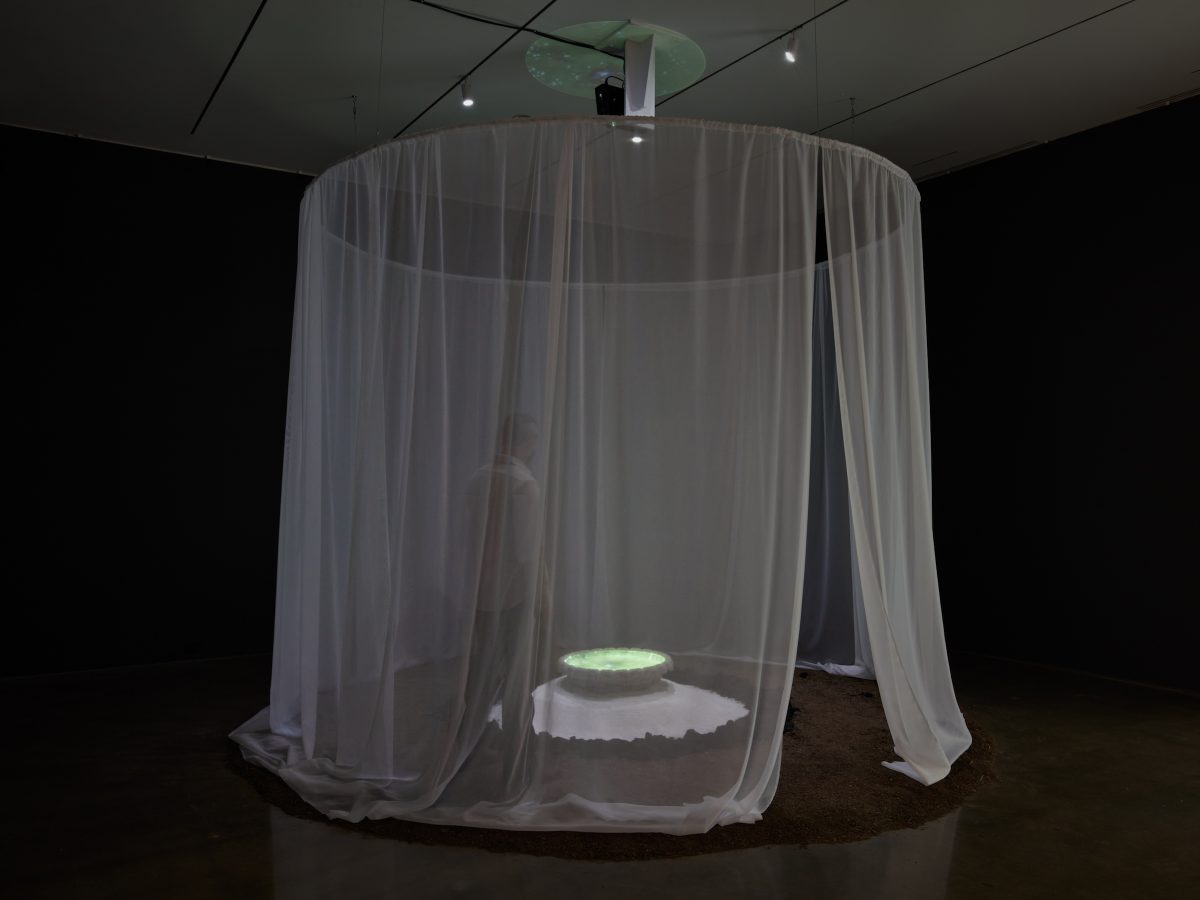
ANNANDALE-ON-HUDSON, NY — The Bantu-Kongo cosmogram dikenga, proposes fluid boundaries between the physical and spiritual world. This circular diagram, which visualizes the cosmological ethos behind various African and African diasporic religions, refutes linear notions of time and life. A continuous loop of deaths and rebirths transpire daily, cycling through each dimension in concert with the rise and fall of the sun.
The crossroads, or “time of Exu,” as it’s called in Brazilian Candomblé (after the deity Exu, the gatekeeper of the spirit world), marks the tenuous space between the human and the divine. Eclipse, the first US exhibition of the Brazilian artist Castiel Vitorino Brasileiro, charts the boundless potential of this in-between territory, declaring the crossroads a site where binaries –– from light to dark, masculine to feminine, colonized to colonizer –– are inverted and often rendered obsolete.

Curated by Bernardo Mosqueira at the CCS Bard Galleries of the Hessel Museum of Art, Eclipse includes the titular, site-specific 2021 work alongside six moving image works produced by the artist from 2018 to 2020, each of which is available to stream online throughout the duration of the exhibition. Brasiliero grounds her performance-based work in her practice of Candomblé. Consistently, she marries repetitive bodily movements with richly textured soundscapes to rupture the barriers that divide tangible and intangible spheres of being. As I enter the intimate gallery of “Eclipse” (2021), I am transfixed by Brasileiro’s hushed vocals which emanate tenderly from above. At the center of the dim gallery, a stone basin filled with water sits atop a mound of salt, encircled by a ring of charcoal and shrouded by a thin, cloth veil. Together, these organic materials are charged with spiritual power and Brasileiro, using them as metaphysical conduits, deploys her body as a medium from which to explore manifold states of existence.
Projected onto the pool of water, Brasileiro’s body contracts and expands with the tides of the Atlantic Ocean, while the hungry groan of waves crashing resounds throughout the gallery. Her contorting figure, which bobs in and out of a sea of green, refuses categorization, sometimes recalling a mermaid or a fetus gliding through the womb. Removed from the physical world, externally imposed identities like transness and Blackness dissolve here. In their place, Brasileiro conjures an unrestrained, timeless environment for deliberate introspection, mirroring an altar, or a site of worship.

Like in “Eclipse” (2020), Brasileiro’s 2019 video work, “Um punhado de onze horas 1 (A handful of eleven o’clock 1),” induces a trance-like state through its repetition, inviting viewers to embody the ephemeral and sacred alongside her. Here, Brasileiro is filmed gingerly potting flowers and herbs as daylight wanes, while her shadowy spirit –– a hollow reflection of Brasileiro herself –– emerges from behind her, conducting her motions from the crown of her head. As visualized within the dikenga cosmogram, midnight marks the apex of the spiritual world. Fittingly, as night darkens in the work, the spirit overcomes Brasileiro and quietly lulls her to sleep, leaving the viewer to imagine the aftermath before she steadily reawakens at dawn.
In a conversation with Mosqueira, archived in the exhibition catalogue, Brasileiro writes, “When the sun dies and moon’s birth starts, I need to be in a safe place. I feel that this moment is an eclipse in me.” At the Hessel, Brasileiro welcomes these periods of immeasurable uncertainty and transition, holding space for onlookers to unearth the metamorphic potential of the unknown.

Castiel Vitorino Brasileiro: Eclipse continues through May 30 at the Hessel Museum of Art, CCS Bard Galleries (33 Garden Road, Annandale-On-Hudson, New York). The exhibition was curated by Bernardo Mosqueira.
0 Commentaires